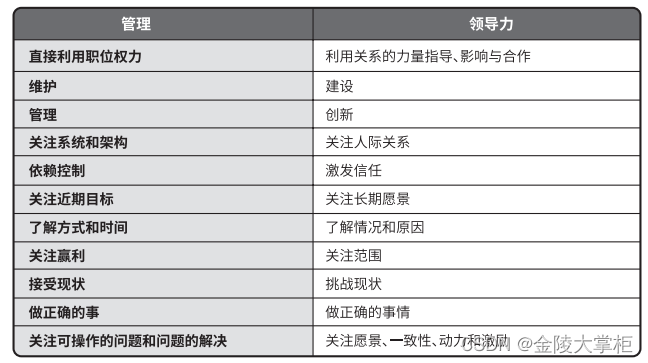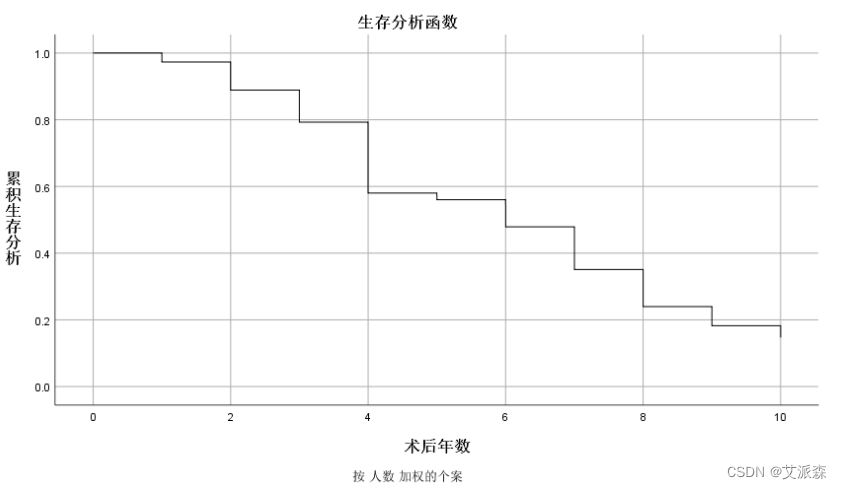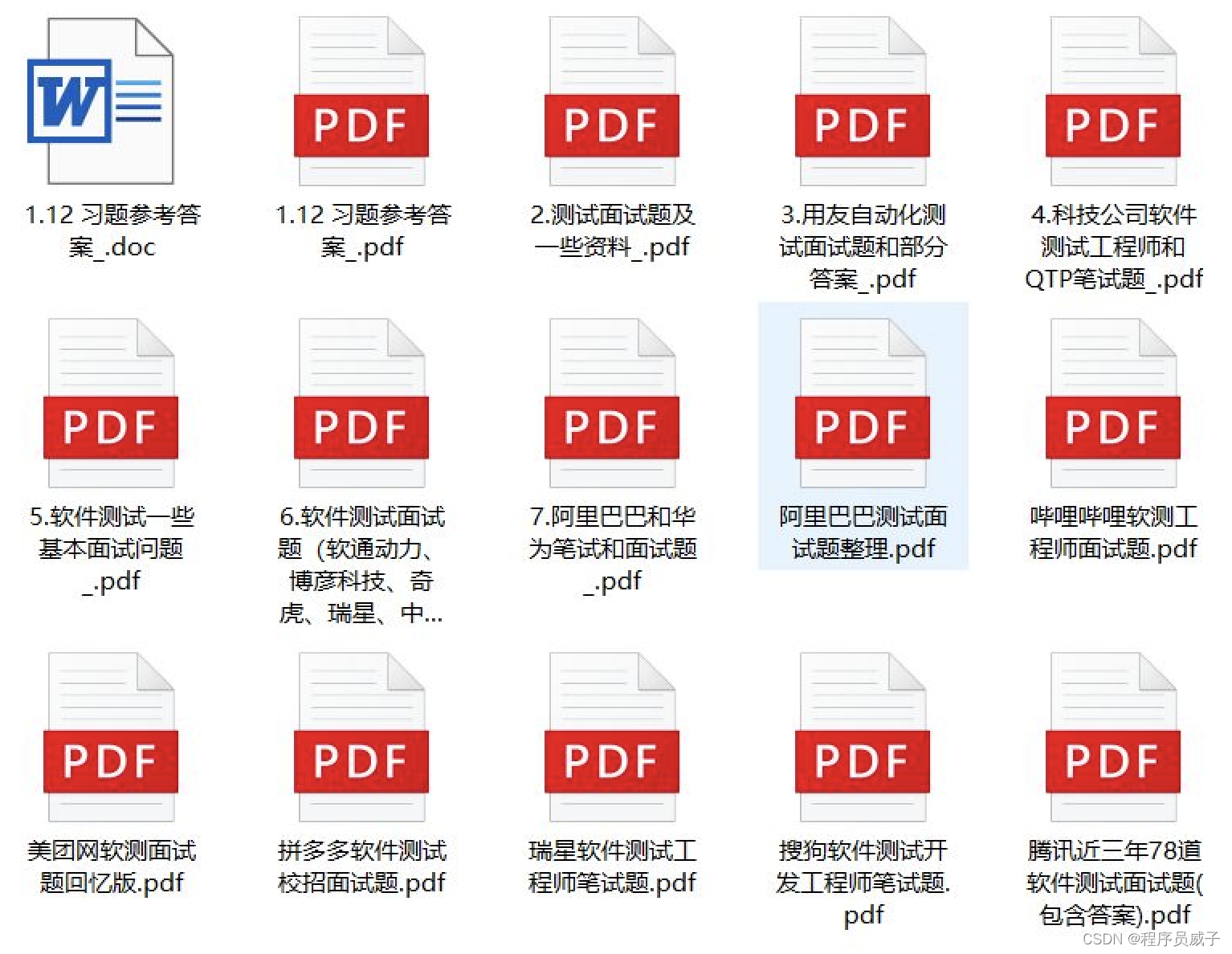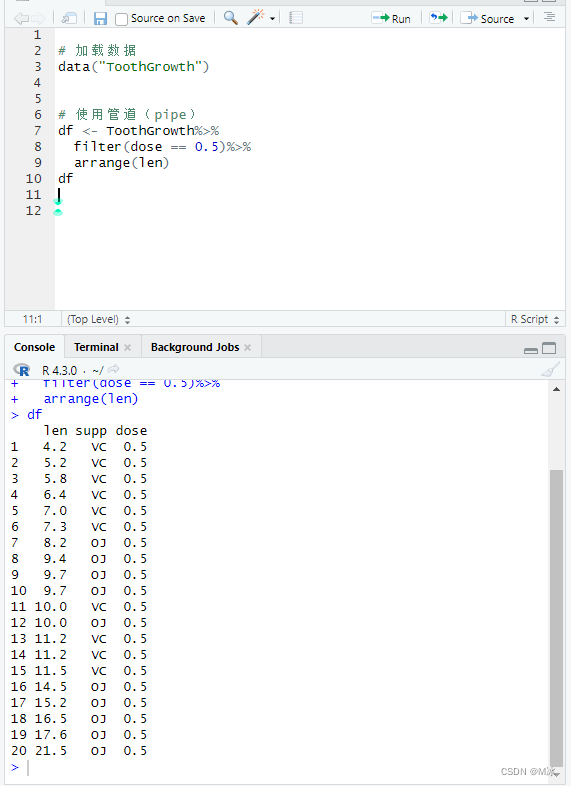pg中的快照
快照(snapshot)是记录数据库当前瞬时状态的一个数据结构。pg数据库的快照保存当前所有活动事务的最小事务ID、最大事务ID、当前活跃事务列表、当前事务的command id等
快照数据保存在SnapshotData结构体类型中,源码src/include/utils/snapshot.h
typedef struct SnapshotData
{SnapshotType snapshot_type; /* 快照类型 */
TransactionId xmin; /* 事务ID小于xmin,对于快照可见 */
TransactionId xmax; /* 事务ID大于xmax,对于快照不可见 *//* 获取快照时活跃事务列表。该列表仅包括xmin与xmax之间的txid */
TransactionId *xip;
uint32 xcnt; /* xip_list保存在xip[] *//* 获取快照时活跃子事务列表 */
TransactionId *subxip;
int32 subxcnt; /* 子事务保存在subxip[] */
bool suboverflowed; /* 子事务是否溢出,子事务较多时会产生溢出 */bool takenDuringRecovery; /* 是否是恢复快照recovery-shaped snapshot? */
bool copied; /* 这里应该是快照是否是copy的(可重复读和串行化隔离级别,会copy快照)false if it's a static snapshot */CommandId curcid; /* 事务中的command id,CID< curcid的可见 */
...
TimestampTz whenTaken; /* 生成快照的时间戳 */
XLogRecPtr lsn; /* 生成快照的LSN */
} SnapshotData;
typedef struct SnapshotData *Snapshot;
快照中最重要的信息是xmin、xmax、xip_list。通过pg_current_snapshot()(pg12及以前用 txid_current_snapshot () )显示当前事务的快照。
注意区分快照xmin、xmax跟元组上的xmin、xmax,含义是不一样的。
lzldb=*# select pg_current_snapshot();pg_current_snapshot
---------------------100:104:100,102
| xmin | 最早活跃的txid,所有比他更早的事务txid<xmin,要么提交和可见,要么回滚并成为死元组 |
|---|---|
| xmax | 第一个尚未分配的txid,xmax=latestCompletedXid+1,所有txid>=xmax的事务都未启动并对当前快照不可见 |
| xip_list | xip_list存储在数组xip[]中。因为所有事务开始顺序性和完成顺序不一定是一致的,晚开始的事务可能早完成,所以只有xmin和xmax不能完全表达获取快照时的所有活动事务。xip_list保存获得快照时的活动事务 |
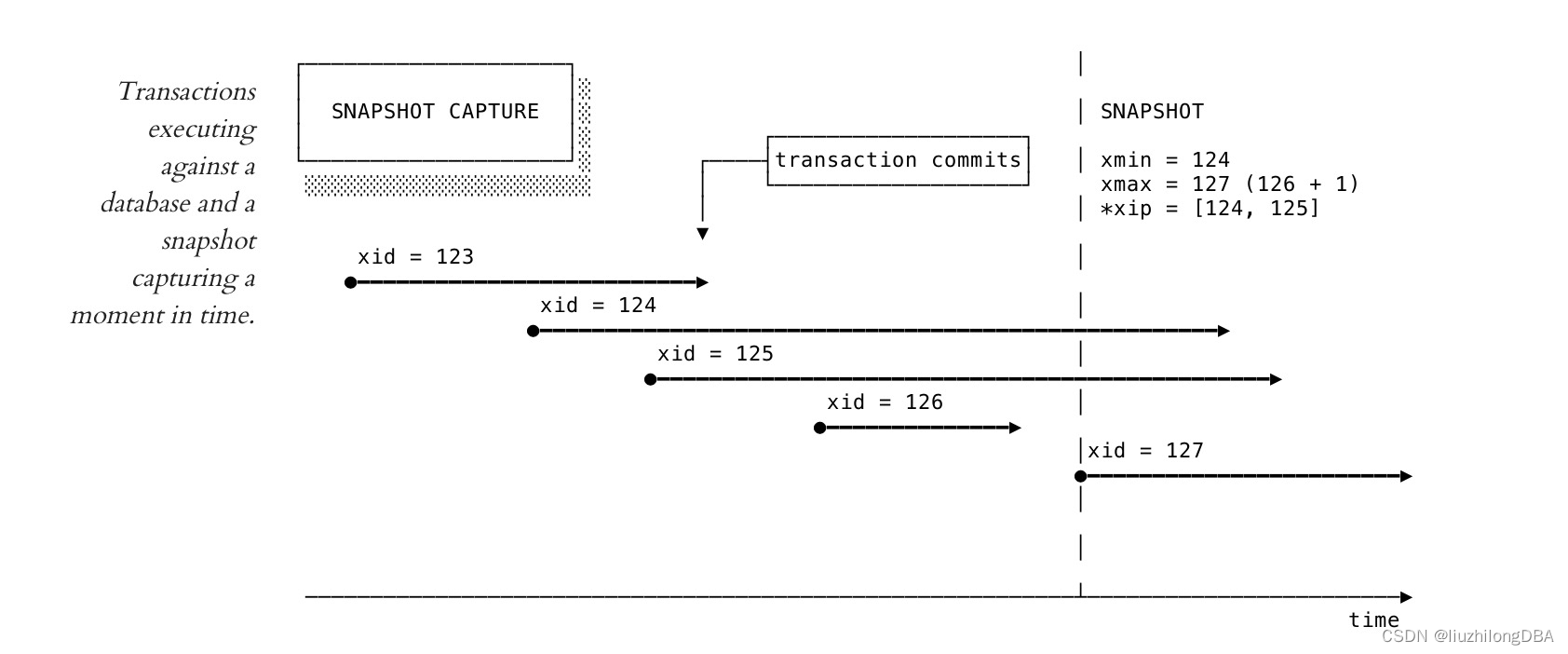
快照类型
除了mvcc快照以外,pg在src/include/utils/snapshot.h中还定义了一些其他的快照类型
typedef enum SnapshotType
{/* 当且仅当元组符合mvcc快照可见规则时,元组可见* 最重要的一种快照事务,是pg用来实现mvcc的快照类型* 元组可见性基于事务快照的xmin,xmax,xip_list,curcid等信息进行判断* 如果命令发生了数据变更,当前mvcc快照是看不到的,需要再生成mvcc快照*/
SNAPSHOT_MVCC = 0,
/* 元组上的事务已提交,则可见* 进行中的事务不可见* 命令发生了数据变更,当前self快照可以看见*/
SNAPSHOT_SELF,/** 任何元组都可见*/
SNAPSHOT_ANY,/** toast重要是有效的就可见。toast可见性依赖主表的元组可见性*/
SNAPSHOT_TOAST,/** 命令发生了数据变更,当前dirty快照可以看见* dirty快照会保存当前进行中元组的版本信息* 快照xmin会设置成其他进行中事务的元组xmin,xmax类似*/
SNAPSHOT_DIRTY,/* HISTORIC_MVCC快照规则与MVCC快照一致,用于逻辑解码*/
SNAPSHOT_HISTORIC_MVCC,/*判断死元组是否对一些事务可见*/
SNAPSHOT_NON_VACUUMABLE
} SnapshotType;快照与隔离级别
不同的隔离级别,快照获取方式是不一样的
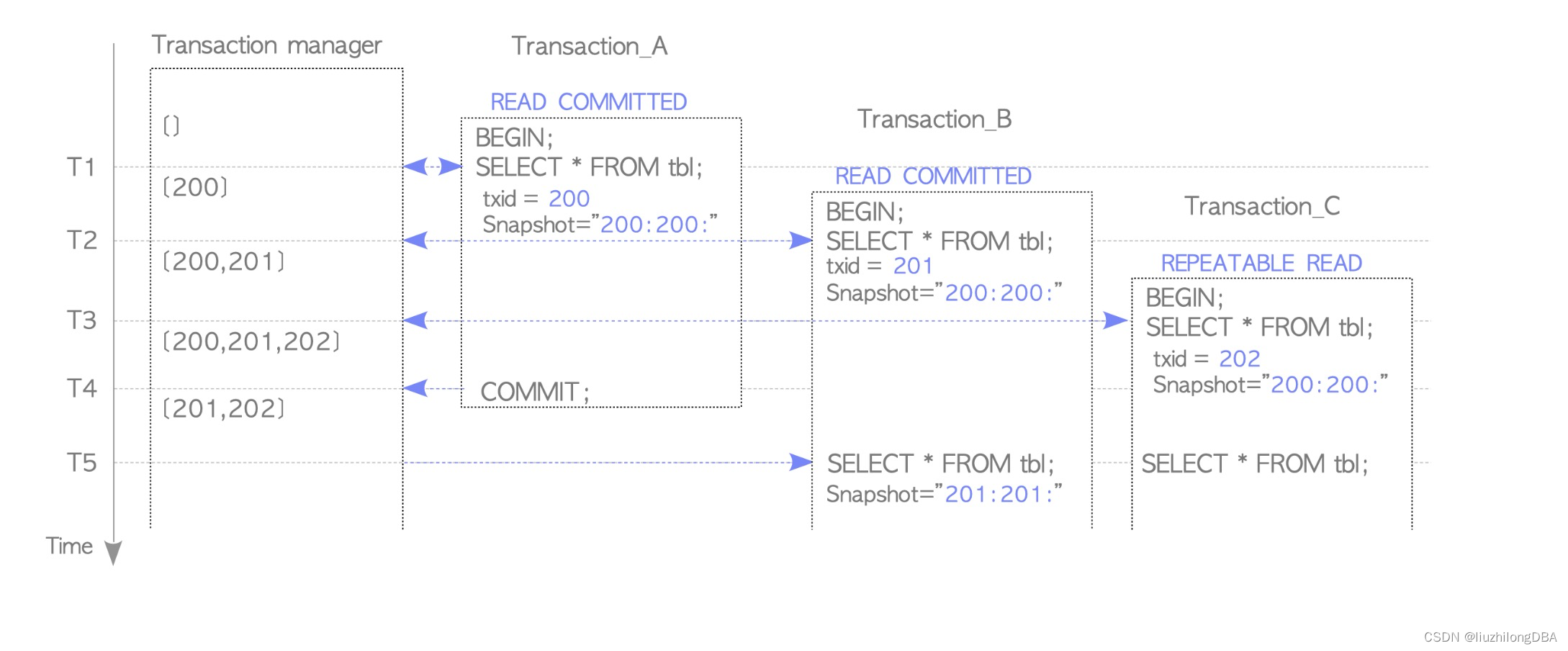
rc模式需要事务中的每个sql都获得快照,而rr模式在事务中只使用一个快照。获得快照的方法在GetTransactionSnapshot()函数中。
进程上的事务结构体
pg在获得快照数据的时候,需要检索所有backend进程的事务状态。
所以在理解获得快照数据函数GetSnapshotData()之前,需要先理解几个在关于backend process的结构体。这些结构体包括PGPROC、PGXACT、PROC_HDR(PROCGLOBAL)、ProcArray
这些process相关结构体包含一些进程、锁等信息,这里只研究process里事务相关的信息。源码以pg13源码为示例
PGPROC结构体
源码src/include/storage/proc.h
//每个backend进程在内存中都存储PGPROC结构体
//可以理解为backend进程的主结构体
struct PGPROC
{
...
LocalTransactionId lxid; /* local id of top-level transaction currently* being executed by this proc, if running;* else InvalidLocalTransactionId */
...
struct XidCache subxids; /* 缓存子事务XIDs */
...
/* clog组事务状态更新 */
bool clogGroupMember; /* 当前proc是否使用clog组提交 */
pg_atomic_uint32 clogGroupNext; /* 原子int,指向下一个组成员proc */
TransactionId clogGroupMemberXid; /* 当前要提交的xid */
XidStatus clogGroupMemberXidStatus; /* 当前要提交xid的状态 */
int clogGroupMemberPage; /* 当前要提交xid属于哪个page*/XLogRecPtr clogGroupMemberLsn; /* 当前要提交的xid的commit日志的lsn号 */
};
/* NOTE: "typedef struct PGPROC PGPROC" appears in storage/lock.h. 居然不跟结构体写在一起*/PGXACT结构体
//在9.2以前,PGXACT的信息在PGPROC中,由于压测显示在多cpu系统中,因为减少了获取的缓存行数,把两者分开GetSnapshotData会更快,
typedef struct PGXACT
{TransactionId xid; /* id of top-level transaction currently being* executed by this proc, if running and XID* is assigned; else InvalidTransactionId */// 看上是当前进程的xmaxTransactionId xmin; /* 不包括lazy vaccum,事务开始时最小xid,vacuum无法删除xid >= xmin的元组*/uint8 vacuumFlags; /* vacuum-related flags, see above */bool overflowed; //PGXACT是否溢出uint8 nxids;
} PGXACT;
能看出pgxact保存的信息比较简单,是backend的xmin、xmax等事务相关信息。而pgproc更倾向于保存backend的基本信息,pgproc中还是有一部分不太频繁调用的事务信息,不过最核心的进程事务信息在pgxact中
PROC_HDR(PROCGLOBAL)结构体
每个backend process都有proc结构体,很明显在高并发场景下扫描所有proc寻找事务信息比较耗时,这时需要一个实例级别的结构体存储所有proc信息,这个结构体就是PROCGLOBAL**。**
源码一般用结构体类型PROC_HDR定义结构体指针指向PROCGLOBAL。PROC_HDR存储的是全局的proc信息,所有proc数组列表、空闲proc等等
源码位置src/include/storage/proc.h
typedef struct PROC_HDR
{/* pgproc数组 (not including dummies for prepared txns) */PGPROC *allProcs;/* pgxact数组 (not including dummies for prepared txns) */PGXACT *allPgXact;.../* Current shared estimate of appropriate spins_per_delay value */int spins_per_delay;/* The proc of the Startup process, since not in ProcArray */PGPROC *startupProc;int startupProcPid;/* Buffer id of the buffer that Startup process waits for pin on, or -1 */int startupBufferPinWaitBufId;
} PROC_HDR;
PROCARRAY结构体
procarray在procarray.c中,procarray.c是维护所有backend的PGPROC和PGXACT结构的。
源码位置src/backend/storage/ipc/procarray.c
typedef struct ProcArrayStruct
{int numProcs; /* proc的个数*/int maxProcs; /* proc array的大小 *///处理已分配的xidint maxKnownAssignedXids; /* allocated size of array */int numKnownAssignedXids; /* current # of valid entries */int tailKnownAssignedXids; /* index of oldest valid element */int headKnownAssignedXids; /* index of newest element, + 1 */slock_t known_assigned_xids_lck; /* protects head/tail pointers *//** Highest subxid that has been removed from KnownAssignedXids array to* prevent overflow; or InvalidTransactionId if none. We track this for* similar reasons to tracking overflowing cached subxids in PGXACT* entries. Must hold exclusive ProcArrayLock to change this, and shared* lock to read it.*/TransactionId lastOverflowedXid;/* oldest xmin of any replication slot */TransactionId replication_slot_xmin;/* oldest catalog xmin of any replication slot */TransactionId replication_slot_catalog_xmin;/* pgprocnos,相当于allPgXact[]数组下标,可用于检索allPgXact[],该数组有PROCARRAY_MAXPROCS条目 */int pgprocnos[FLEXIBLE_ARRAY_MEMBER];
} ProcArrayStruct;
static ProcArrayStruct *procArray;获得快照
GetTransactionSnapshot()
通过函数GetTransactionSnapshot()获得快照
源码src/backend/utils/time/snapmgr.c
// GetTransactionSnapshot()为一个事务中的sql分配合适的快照
Snapshot
GetTransactionSnapshot(void)
{// 如果是逻辑解码,则获得historic类型快照Return historic snapshot if doing logical decoding. We'll never need a// 因为是逻辑解码事务,后续就不需要再call非historic类型快照了,直接returnif (HistoricSnapshotActive()){Assert(!FirstSnapshotSet);return HistoricSnapshot;}/* 如果不是事务的第一次调用,则进入if */if (!FirstSnapshotSet){/** 保证catalog快照是新的*/InvalidateCatalogSnapshot();Assert(pairingheap_is_empty(&RegisteredSnapshots));Assert(FirstXactSnapshot == NULL);//如果是并行模式下则返回报错if (IsInParallelMode())elog(ERROR,"cannot take query snapshot during a parallel operation");//如果是可重复读或串行化隔离级别,则在事务中都使用同一个快照,所以只copy一次//IsolationUsesXactSnapshot()标识隔离级别为可重复读或串行化,他们的在同事务中只使用一个快照if (IsolationUsesXactSnapshot()){//首先,在CurrentSnapshotData中创建快照 //如果是SI隔离级别,初始化SSI所需的数据结构if (IsolationIsSerializable()) CurrentSnapshot = GetSerializableTransactionSnapshot(&CurrentSnapshotData);elseCurrentSnapshot = GetSnapshotData(&CurrentSnapshotData);/* Make a saved copy *//* 可重复读或串行化隔离级别,这个快照会贯穿整个事务,所以只复制一次 */CurrentSnapshot = CopySnapshot(CurrentSnapshot);FirstXactSnapshot = CurrentSnapshot;/* Mark it as "registered" in FirstXactSnapshot */FirstXactSnapshot->regd_count++;pairingheap_add(&RegisteredSnapshots, &FirstXactSnapshot->ph_node);}else//如果是读已提交隔离级别,获得快照CurrentSnapshot = GetSnapshotData(&CurrentSnapshotData);// 修改标记,表示是第一次获得的快照,下次事务再调用该函数,就不会进到这层if了FirstSnapshotSet = true;return CurrentSnapshot;}//如果不是事务中第一次调用(已经有第一个快照了)
//可重复读或串行化隔离级别,返回第一个快照的复制品if (IsolationUsesXactSnapshot())return CurrentSnapshot;/* Don't allow catalog snapshot to be older than xact snapshot. */InvalidateCatalogSnapshot();//读已提交级别,重新获得快照CurrentSnapshot = GetSnapshotData(&CurrentSnapshotData);return CurrentSnapshot;
}关于IsolationUsesXactSnapshot()和IsolationIsSerializable()
在src/include/access/xact.h宏定义
#define XACT_READ_UNCOMMITTED 0
#define XACT_READ_COMMITTED 1
#define XACT_REPEATABLE_READ 2
#define XACT_SERIALIZABLE 3
//内部只有3个隔离级别,就是1、2、3
//2个隔离级别在每个事务中用同一快照,其他隔离级别在每个sql语句用一个快照
#define IsolationUsesXactSnapshot() (XactIsoLevel >= XACT_REPEATABLE_READ)
#define IsolationIsSerializable() (XactIsoLevel == XACT_SERIALIZABLE)
IsolationUsesXactSnapshot()是可重复读或串行化隔离级别
IsolationIsSerializable()是串行化隔离级别。
GetTransactionSnapshot()函数流程图:
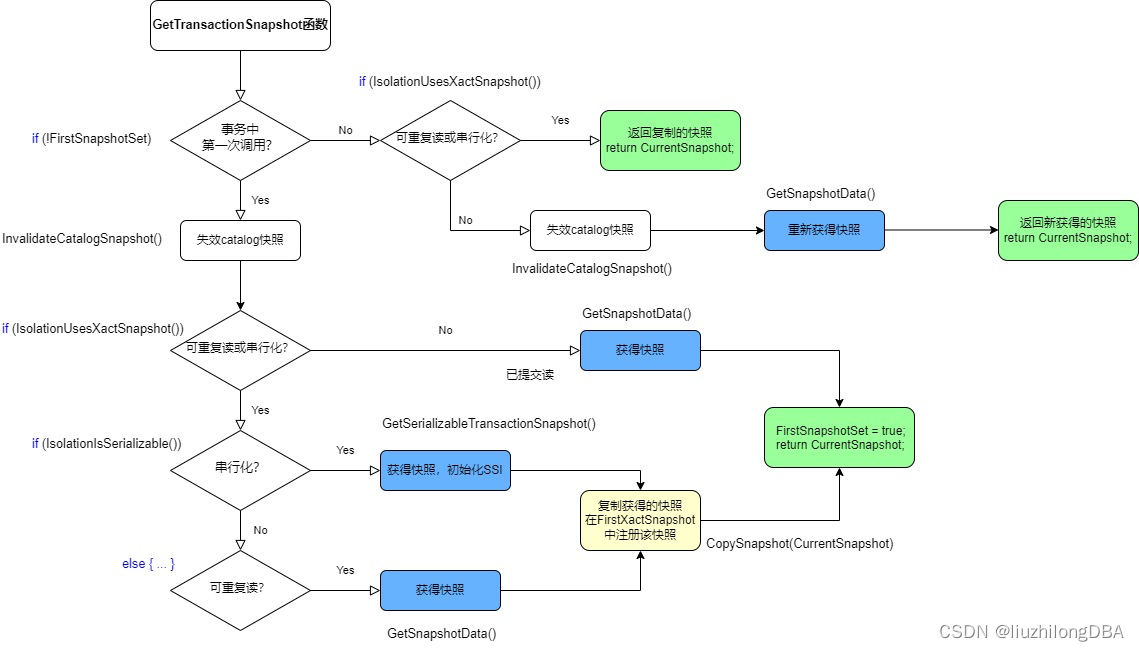
(图片来自csdn https://blog.csdn.net/Hehuyi_In)
GetTransactionSnapshot()主要的判断逻辑:
- 逻辑解码时的historic快照直接返回快照结果
- 在可重复读或串行化隔离级别,如果是第一次调用,返回快照并复制,以便下次(既非第一次)直接引用该快照
- 在读已提交隔离级别,每次调用都生成新快照
- 串行化隔离级别的第一次调用,额外获得SSI数据信息
GetTransactionSnapshot()获得快照,其获得快照数据调用的是GetSnapshotData()
GetSnapshotData()
源码src/backend/storage/ipc/procarray.c
Snapshot
GetSnapshotData(Snapshot snapshot)
{//先初始化一些变量,包括arrayP指针,procarray,xmin,xmax,复制槽事务id等等ProcArrayStruct *arrayP = procArray;TransactionId xmin;TransactionId xmax;TransactionId globalxmin;int index;int count = 0;int subcount = 0;bool suboverflowed = false;TransactionId replication_slot_xmin = InvalidTransactionId;TransactionId replication_slot_catalog_xmin = InvalidTransactionId;Assert(snapshot != NULL);if (snapshot->xip == NULL){/** First call for this snapshot. Snapshot is same size whether or not* we are in recovery, see later comments.*/snapshot->xip = (TransactionId *) //获得当前事务的xipmalloc(GetMaxSnapshotXidCount() * sizeof(TransactionId));...Assert(snapshot->subxip == NULL);snapshot->subxip = (TransactionId *) //获得当前子事务的subxipmalloc(GetMaxSnapshotSubxidCount() * sizeof(TransactionId));...}//获取procarray,需要共享lwlock锁LWLockAcquire(ProcArrayLock, LW_SHARED);/* xmax=最大完成xid+1 */xmax = ShmemVariableCache->latestCompletedXid;Assert(TransactionIdIsNormal(xmax));TransactionIdAdvance(xmax); //xmax+1/* xmax的值已经取出,xmin需要检索pgproc、pgxact、procarray *//* 先把globalxmin、xmin赋值xmax,如果判断backend没有事务信息,就比较好办了 */globalxmin = xmin = xmax; //恢复快照单独处理snapshot->takenDuringRecovery = RecoveryInProgress();//非恢复快照需要到backend中获取事务信息if (!snapshot->takenDuringRecovery){int *pgprocnos = arrayP->pgprocnos;int numProcs;/** Spin over procArray checking xid, xmin, and subxids. The goal is* to gather all active xids, find the lowest xmin, and try to record* subxids.看上去在检索procarray的时候会spin,以收集所有活跃的xid,最小的xmin,子事务subxid*/numProcs = arrayP->numProcs;for (index = 0; index < numProcs; index++){int pgprocno = pgprocnos[index]; //通过循环numProcs进程个数,取pgprocno全部下标PGXACT *pgxact = &allPgXact[pgprocno]; //通过pgprocno遍历所有pgxact结构体TransactionId xid;.../* Update globalxmin to be the smallest valid xmin */xid = UINT32_ACCESS_ONCE(pgxact->xmin);if (TransactionIdIsNormal(xid) &&NormalTransactionIdPrecedes(xid, globalxmin))globalxmin = xid;/* Fetch xid just once - see GetNewTransactionId */xid = UINT32_ACCESS_ONCE(pgxact->xid);.../* 把backend中的xmin保存到快照xip中 *//* 也就是说通过便利所有pgxact以找到所有活跃的xid */snapshot->xip[count++] = xid;.../* 子事务信息处理 */if (!suboverflowed) //如果子事务没有溢出{if (pgxact->overflowed)suboverflowed = true; //如果事务溢出,将子事务也标记为溢出else{int nxids = pgxact->nxids;if (nxids > 0){PGPROC *proc = &allProcs[pgprocno];pg_read_barrier(); /* pairs with GetNewTransactionId */memcpy(snapshot->subxip + subcount,(void *) proc->subxids.xids,nxids * sizeof(TransactionId));subcount += nxids;}}}}}else //这里的else对应if (!snapshot->takenDuringRecovery){// 这里的判断都是standby的,当实例是hot standby模式,从库中有查询事务时subcount = KnownAssignedXidsGetAndSetXmin(snapshot->subxip, &xmin,xmax);if (TransactionIdPrecedesOrEquals(xmin, procArray->lastOverflowedXid))suboverflowed = true;}//事物槽的xmin和catalog全集群xmin,先保存到本地变量//事物槽xmin是为了防止元组被回收//注释中说明是为了不长时间持有ProcArrayLock,才保存到本地变量replication_slot_xmin = procArray->replication_slot_xmin;replication_slot_catalog_xmin = procArray->replication_slot_catalog_xmin;//从backend中获取事务信息的工作已经完成,下面是一堆if判断,收尾工作并增加代码严谨性 if (!TransactionIdIsValid(MyPgXact->xmin))MyPgXact->xmin = TransactionXmin = xmin;LWLockRelease(ProcArrayLock); //释放ProcArrayLockif (TransactionIdPrecedes(xmin, globalxmin))globalxmin = xmin; //globalxmin和进程xmin,globalxmin赋值更小的那个RecentGlobalXmin = globalxmin - vacuum_defer_cleanup_age;if (!TransactionIdIsNormal(RecentGlobalXmin))RecentGlobalXmin = FirstNormalTransactionId; //特殊情况下,如果RecentGlobalXmin<=2,赋值3/* Check whether there's a replication slot requiring an older xmin. */if (TransactionIdIsValid(replication_slot_xmin) &&NormalTransactionIdPrecedes(replication_slot_xmin, RecentGlobalXmin))RecentGlobalXmin = replication_slot_xmin;/* Non-catalog tables can be vacuumed if older than this xid */RecentGlobalDataXmin = RecentGlobalXmin;//再次检查和对比catalog,globalxminnif (TransactionIdIsNormal(replication_slot_catalog_xmin) &&NormalTransactionIdPrecedes(replication_slot_catalog_xmin, RecentGlobalXmin))RecentGlobalXmin = replication_slot_catalog_xmin;RecentXmin = xmin;//开始给snapshot结构体赋值,返回快照数据snapshot->xmin = xmin;snapshot->xmax = xmax;snapshot->xcnt = count;snapshot->subxcnt = subcount;snapshot->suboverflowed = suboverflowed;snapshot->curcid = GetCurrentCommandId(false);//如果是一个新快照,初始化一些快照信息snapshot->active_count = 0;snapshot->regd_count = 0;snapshot->copied = false;//下面是快照过久时的判断,居然写在这if (old_snapshot_threshold < 0){/** If not using "snapshot too old" feature, fill related fields with* dummy values that don't require any locking.*///如果没有使用old_snapshot_threshold参数(参数<0,不会出现snapshot too old的问题)//赋一些简单的值,都是常量,不会产生任何锁snapshot->lsn = InvalidXLogRecPtr;snapshot->whenTaken = 0;}else{//当old_snapshot_threshold参数>=0时,需要完成old snapshot的逻辑snapshot->lsn = GetXLogInsertRecPtr(); //获得lsnsnapshot->whenTaken = GetSnapshotCurrentTimestamp(); //获得快照时间MaintainOldSnapshotTimeMapping(snapshot->whenTaken, xmin); ////GetXLogInsertRecPtr(),GetSnapshotCurrentTimestamp() ,MaintainOldSnapshotTimeMapping()三个函数中有 //SpinLockAcquire和SpinLockRelease//MaintainOldSnapshotTimeMapping()函数还有LWLockAcquire和LWLockRelease //因为每次快照都要调用,获取快照数据函数应该是很频繁的//所以能看出来pg13源码中,如果将old_snapshot_threshold设置为负数,spinlock和lwlock会少很多}return snapshot;
}pg14对事务的优化
pg14事务优化源码分析
pg13的源码能看出来GetSnapshotData()中写死了old_snapshot_threshold>=0时,每次获得快照数据都会产生较多的SpinLock和LWLock,而获得快照对于数据库来说是非常频繁的操作,这必定导致一些性能问题。所以pg14中直接把old_snapshot_threshold部分删除了···
除了删除GetSnapshotData()中的old_snapshot_threshold逻辑,还做了很多其他优化:
-
移除
RecentGlobalXmin,RecentGlobalDataXmin,新增GlobalVisTest*系列函数 -
新增边界boundaries概念,有两个边界分别为definitely_needed,maybe_needed
struct GlobalVisState {/* XIDs >= are considered running by some backend */// >=definitely_needed的行一定可见FullTransactionId definitely_needed;/* XIDs < are not considered to be running by any backend */// <maybe_needed的行一定可以清理FullTransactionId maybe_needed; }; -
新增
ComputeXidHorizons()用于进一步精准计算horizons(保存xmin和removable xid信息),该函数仍需要遍历PGPROC。计算的范围当然是在XID >= maybe_needed && XID < definitely_needed -
新增
GlobalVisTestShouldUpdate()用于判断是否需要再次计算边界先了解一个变量
ComputeXidHorizonsResultLastXminstatic TransactionId ComputeXidHorizonsResultLastXmin; //最后一次精准计算的xminGlobalVisTestShouldUpdate(GlobalVisState *state) {//如果xmin=0,需要重新计算边界。相当于给初始化数据库产生的元组设置一个例外判断if (!TransactionIdIsValid(ComputeXidHorizonsResultLastXmin))return true;/** If the maybe_needed/definitely_needed boundaries are the same, it's* unlikely to be beneficial to refresh boundaries.*///maybe_needed等于definitely_needed不需要再计算了//不过不是用的等于,而是maybe_needed>=definitely_needed//“大于”的场景是没有行一定可见,“等于”的场景是只有一行一定可见if (FullTransactionIdFollowsOrEquals(state->maybe_needed,state->definitely_needed))return false;/* does the last snapshot built have a different xmin? *///当最后一次快照snapshot->xmin=最后一次精准计算的xmin时,不再重新计算边界return RecentXmin != ComputeXidHorizonsResultLastXmin; }
可以看出maybe_needed和definitely_needed跟快照xmin、xmax是相似的,多嵌套了1层计算。先计算boundaries,再进一步精确计算horizons。GlobalVisTestShouldUpdate减少了计算boundaries的场景,而ComputeXidHorizons()精准计算也更高效。
优化结果
推荐一篇pg快照优化的文章:
https://techcommunity.microsoft.com/t5/azure-database-for-postgresql/improving-postgres-connection-scalability-snapshots/ba-p/1806462
对比优化前后的效果相当明显[外链图片转存失败,源站可能有防盗链机制,
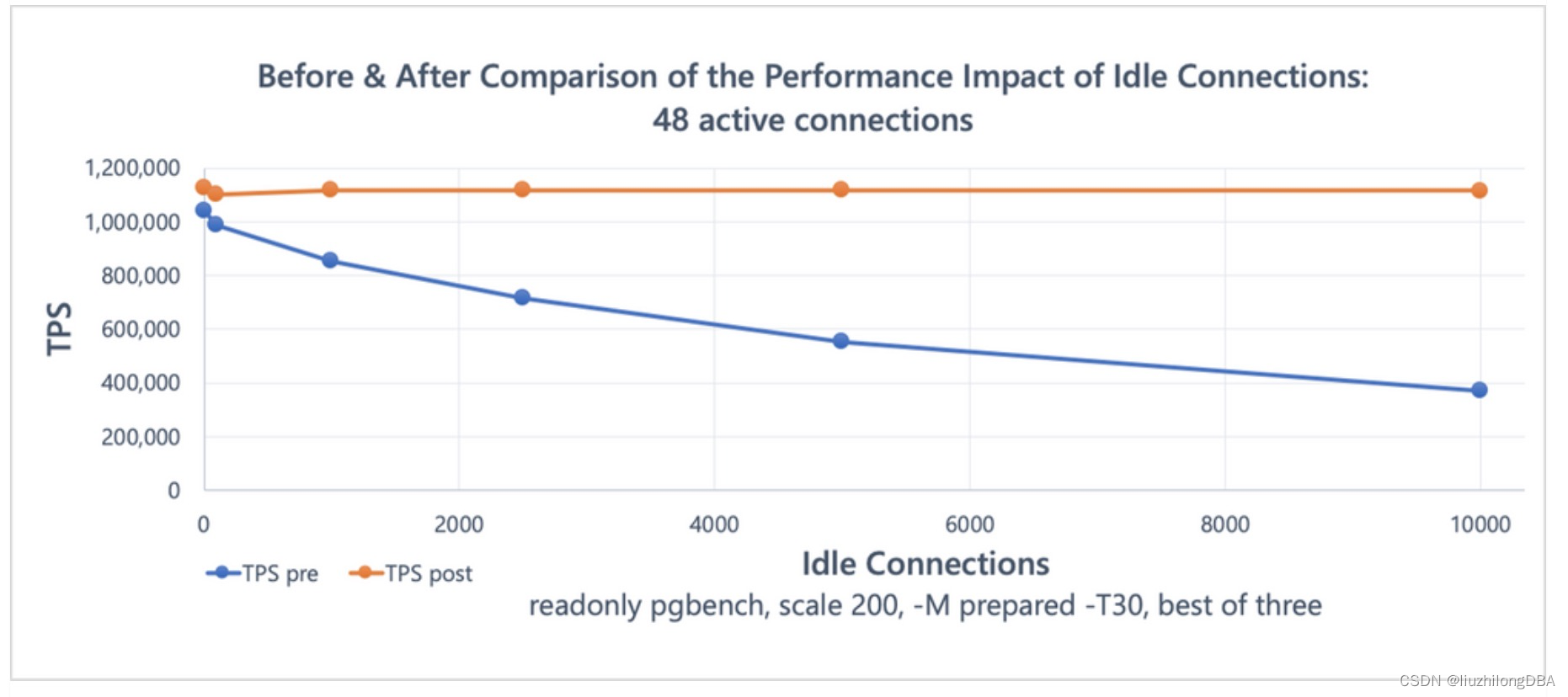
其实在pg13的生产上也能看到GetSnapshotData的性能消耗总是很高。不过没截图,再借用下大佬的图
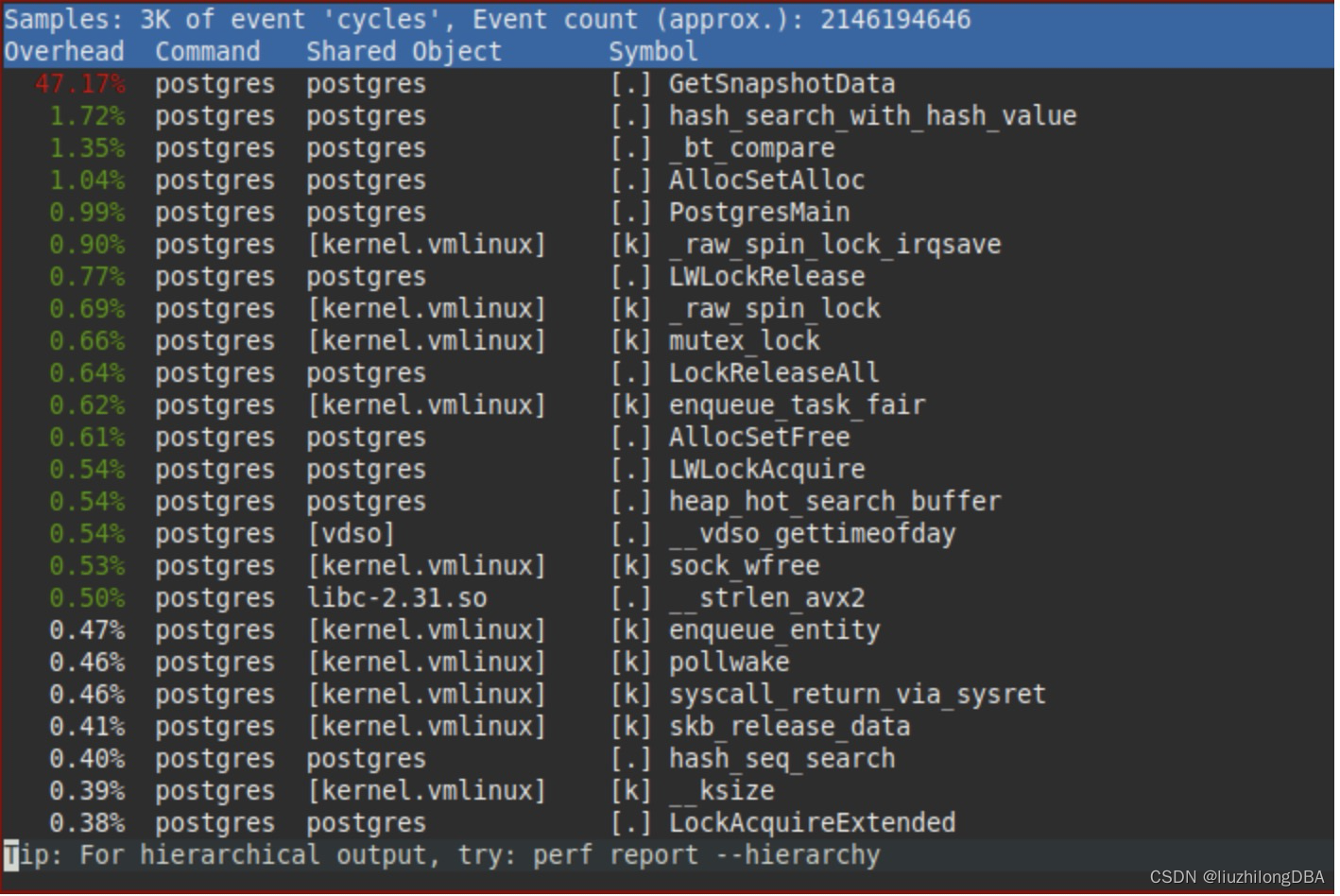
reference
books:
《postgresql指南 内幕探索》
《postgresql实战》
《postgresql技术内幕 事务处理深度探索》
《postgresql数据库内核分析》
https://edu.postgrespro.com/postgresql_internals-14_parts1-2_en.pdf
官方资料:
https://en.wikipedia.org/wiki/Concurrency_control
https://wiki.postgresql.org/wiki/Hint_Bits
https://www.postgresql.org/docs/current/routine-vacuuming.html#VACUUM-FOR-WRAPAROUND
https://www.postgresql.org/docs/10/storage-page-layout.html
https://www.postgresql.org/docs/13/pageinspect.html3
pg事务必读文章 interdb
https://www.interdb.jp/pg/pgsql05.html
https://www.interdb.jp/pg/pgsql06.html
源码大佬
https://blog.csdn.net/Hehuyi_In/article/details/102920988
https://blog.csdn.net/Hehuyi_In/article/details/127955762
https://blog.csdn.net/Hehuyi_In/article/details/125023923
pg的快照优化性能对比
https://techcommunity.microsoft.com/t5/azure-database-for-postgresql/improving-postgres-connection-scalability-snapshots/ba-p/1806462
其他资料
https://brandur.org/postgres-atomicity
https://mp.weixin.qq.com/s/j-8uRuZDRf4mHIQR_ZKIEg
